Welcome to our deep dive into the world of construction rain gear. Picture this - a construction worker braving the elements, rain or shine, kitted out in high visibility rain jackets and pants. It's a common sight at construction sites around the world. But have you ever stopped to think about the quality of these essential items?
Often, there are common misconceptions surrounding the durability and effectiveness of construction rain gear; that they are uncomfortable, heavy, or not fully waterproof. In reality, these notions couldn't be further from the truth. By the end of this comprehensive article, we will debunk these myths and guide you through the growth projections of the rainwear market, especially focusing on construction rain gear. You'll find yourself surprisingly enlightened.
Whether you're a construction worker, a project manager, or someone merely curious about this topic, stick around. You're in for a voyage of discovery.
Understanding Rainwear Market and its Growth
As our world continues undergoing climate changes, the demand for rainwear appears to be rising simultaneously. After all, when unpredictable weather patterns are prevalent, fashion-conscious consumers are consistently seeking practical yet stylish solutions to stay dry. Thus, let's take a closer look at the exciting and ever-growing rainwear market. To quantify this growth, it's important to dive into some intriguing stats.
Predicted Growth Rate
Picture this: the rainwear market is predicted to grow steadily at a compound annual growth rate (CAGR) of 5.9% from 2023 to 2031. What does this mean for the average consumer and industry stakeholders? It indicates that there is likely to be a wider variety of products available in the market, fuelled by increased competition and innovation. Due to emerging trends and continued market expansion, your favorite brands may soon be offering even more top-quality, fashionable rainwear items designed to keep you dry in any weather condition.
Expected Market Size by 2032
Expanding on our analysis, the global rainwear market isn't merely showing signs of slow and steady growth. Instead, it's projected to reach an astounding size of USD 6.50 billion by 2032. This leap forward in market size could lead to lucrative opportunities for stakeholders in this sector, making this an exciting time for rainwear manufacturers and retail businesses. Consumer trends and preferences are also likely to influence these numbers significantly, making it crucial for industry players to stay ahead of the curve by understanding and meeting their customers' needs.
Market Value in 2022
Let's rewind a little to grasp the starting point of this growth journey. In 2022, the global rainwear market was valued at a not-so-meager USD 3864.7 million. This figure, expected to register a CAGR of 5.5% from 2023 onwards, sheds light on the enormous potential the rainwear market offers. Thanks to continuous advancements in material technology, design innovations, and growing consumer awareness about climate change and personal style, the trends shaping this market's growth are worth keeping an eye on.
Indeed, the rise of the rainwear market is a fascinating subject—combining elements of fashion, function, and environmental needs. As understanding these trends become increasingly important for anyone associated with the fashion industry, the rise in demand for rainwear serves as a clear indicator of changing consumer needs and climate patterns worldwide.
Examining Construction Rain Gear Market
Predicting economic growth can be comparable to forecasting the weather—especially when it's the construction rain gear market we're talking about! To construct a clear picture, we've analyzed key market indicators to create a reliable forecast. Let's delve into our findings now, shall we?
Forecasted Growth Rate
With everyone trying to stay dry on the job, it's no surprise that the construction rain gear market is expecting significant growth. According to data, we can expect an impressive CAGR of XX.X% for the period between 2024 and 2031. This forecast suggests a bright future—rain or shine, for the global rain gear market. Remember, these aren't just any old raincoats we're discussing. They're hard-wearing, resilient pieces of gear designed explicitly for the construction industry. So, what factors are propelling this growth, you might ask?
Market Growth between 2023 and 2030
Before we start examining the 2024 to 2031 period, it's valuable to comprehend how this market performed in the years before. The global raincoats and rain jackets sector, which can be considered a sister market of construction rain gear, experienced substantial growth from 2023 to 2030. Understanding the factors that led to this success—changes in weather patterns, advancements in material technology, or shifts in market demand—can also shed light on why the construction rain gear market might be on a similar trajectory. How about we now look a little further into the future?
Projected Growth Rate in the Following Decade
The future of the weather might be unpredictable, but the same can't be said for rain gear. The global rainwear market, which includes construction rain gear, is projected to grow at a steady CAGR of 5.4% from 2023 to 2032. Despite the complexity of the earlier themes we've discussed, it appears the construction rain gear market is positioned for a favorable decade of growth.
There's a common saying that "There's no such thing as bad weather, just inappropriate clothing." Hence, irrespective of the weather reports, the construction rain gear market seems set to face any storm that might come its way and emerge even stronger. Let's keep our umbrellas folded and watch how these forecasts develop!
Discussing Global Rainwear Market Projections
We're diving into the intriguing world of the global rainwear market today, exploring what the future could hold in terms of growth and profitability. Equipped with detailed studies underscored by actionable data, we'll venture beyond the realm of mere speculation. Let's start by setting the stage for the remarkable journey ahead.
Expected Market Size by 2028
Emerging as a strong force in the apparel industry, the global rainwear market shows no signs of slowing down. The transformative growth of this niche can be associated with various factors such as the increasing intensity of unpredictable weather episodes and the awareness about their potential impact.
According to meticulous projections, the global rainwear market is anticipated to reach a significant milestone by the end of 2028. It's estimated that the market size will eventually breach the $1.5 billion mark. This staggering figure reveals the sheer potential and escalating demand for rainwear products worldwide.
Invigorating as that may be, it is the dynamic growth rate at which the market is expected to expand that truly makes heads turn.
Predicted CAGR during the forecast period
During the forecast period, the rainwear market is predicted to navigate a steady growth path. Rough sailing is anticipated to be replaced by a compound annual growth rate (CAGR) of around 5.9%. This rate signifies not only an emerging trend but a paradigm shift in consumer behavior as well.
More than a luxury statement, rainwear has transformed into an essential safety measure, a shift enforced by changing global weather patterns. As a result, our attitudes towards these protective garments have undeniably evolved, leading to this noteworthy growth rate.
Taking these insights into account, the road ahead for the global rainwear market undoubtedly looks promising. Both market size and growth rate forecasts reveal an overarching trend - as long as there's rain, there's going to be an unwavering demand for rainwear. So, whether you're an investor scouting potential industry sectors or a consumer wondering about the future of your favorite raincoat brand, rest assured, the future seems bright - even when it's pouring!
Debunking Myths about Construction Rain Gear
When it comes to construction work, dealing with the elements is all part of the job. Rain is no exception. Despite this, there are still some misconceptions that persist about rain gear specifically designed for construction. Are these rumors founded, or just tall tales stirred up by the wind? Let's dig into this and shed some light on common myths about construction rain gear.
Myth 1: All Rain Gear Is the Same
Many people tend to believe that all rain gear is identical; essentially a plastic suit that keeps you dry. Contrary to this belief, not all rain gear is made alike. The Rain Gear Trends in Construction post reveals that there's a wide range of options available specifically designed to handle a construction environment's demands, from high-visibility jackets to reinforced to waterproof overalls.
- Fact: There's a wide variety of construction rain gear designed to meet specific needs.
Myth 2: Construction Rain Gear Isn't Comfortable
The idea that rain gear isn't comfortable to wear is a common misconception. While some cheaper options might be less comfortable, many high-quality construction rain gear offers additional features for comfort, such as breathable materials, adjustable straps, and padding in critical areas.
- Fact: High-quality construction rain gear prioritizes comfort without compromising durability or protection.
Myth 3: Rain Gear Isn't Durable
A persistent myth is that rain gear isn't resistant enough to withstand a construction site's harsh conditions. In truth, many rain gear manufacturers recognize the demanding nature of construction work and design their products accordingly. This includes reinforced stitching, robust materials, and additional protection where it matters.
- Fact: Construction rain gear is specifically designed to be durable and withstand the rigors of a construction site.
In reality, high-quality construction rain gear is an essential tool for any construction worker. It not only protects from the elements but also ensures comfort and durability, thus enhancing productivity in any weather. By getting rid of these misconceptions about construction rain gear, we can see the product's true value in the industry. Always make sure to stay updated with recent trends, such as the 2023 game-changing rain gear trends, to ensure you have the best equipment at your disposal.
Conclusion
In summing up, the magnifying outlook of the global rainwear market, paired with accelerating growth indicators of the construction rain gear sector, underlines a promising future. It's equally significant to shatter prevailing misconceptions about construction rain gear. Not all are restrictive, heavy, and uncomfortable. Companies like Rain Gear Pro are striking the perfect balance between durability, convenience, and comfort.
Rain Gear Pro exemplifies how modern advances can redesign construction rain gear for the better. By focusing on creating products that are 100% waterproof, rip-resistant, and breathable, they elevate user's overall experience amid harsh weather. The addition of reflective 3M striping for enhanced visibility is a testament to their commitment to the workers' security.
Keeping up with the industry growth and continually investing in innovative products, Rain Gear Pro stands as a trusted name in the industry. Check out their expansive collection here and witness the new-age construction rain gear that is redefining comfort and durability. Remember, the right gear can make all the difference in productivity and safety at a construction site.
Frequently Asked Questions
-
What are the key features to consider in quality construction rain gear?
Key features to consider in quality construction rain gear include waterproof and breathable materials, durable construction, reflective elements for visibility, adjustable cuffs and hoods, and reinforced seams and zippers.
-
Are construction rain gear and regular raincoats the same?
No, construction rain gear is specifically designed for the unique needs of construction workers. It offers additional features such as high visibility colors, extra durability, and pockets for tool storage, making it more suitable for the construction environment.
-
How can I ensure the right fit for construction rain gear?
To ensure the right fit for construction rain gear, refer to the sizing charts provided by the manufacturer. It's important to measure your chest, waist, and inseam accurately. If in doubt, opt for a slightly larger size to allow for layering and ease of movement.
-
How do I maintain and clean construction rain gear?
To maintain and clean construction rain gear, follow the manufacturer's instructions. Generally, it's recommended to hand wash with a mild detergent, avoid bleach or fabric softeners, and air dry. Regularly check and reapply DWR (Durable Water Repellent) coating to ensure water resistance.
-
What are some reputable brands for quality construction rain gear?
Some reputable brands known for their quality construction rain gear include Carhartt, Helly Hansen, Dickies, Grundéns, and MCR Safety. These brands offer a range of options tailored to the specific needs of construction workers.



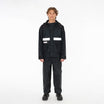



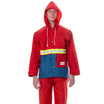


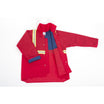

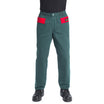



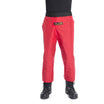




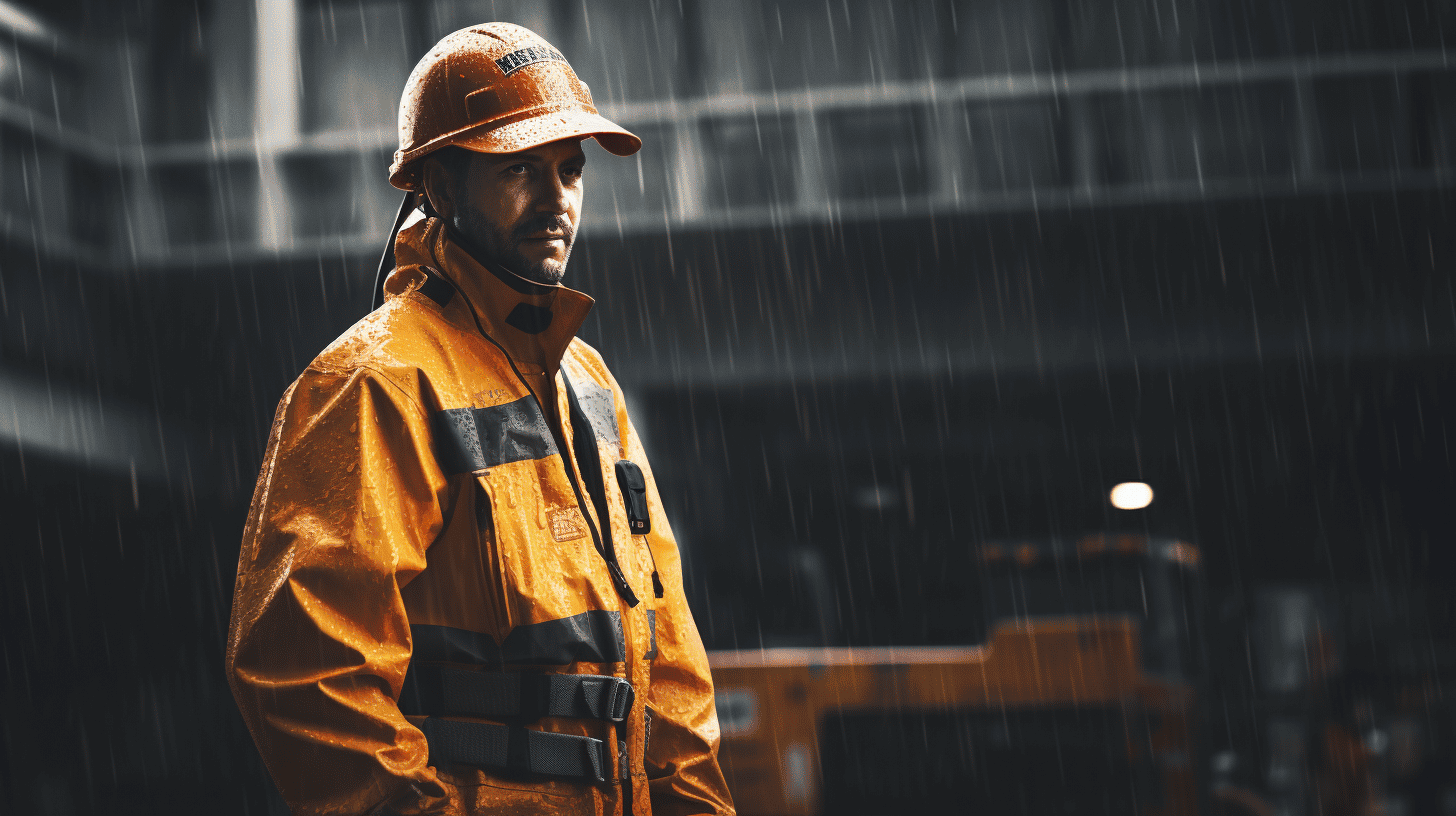

Leave a comment
This site is protected by hCaptcha and the hCaptcha Privacy Policy and Terms of Service apply.